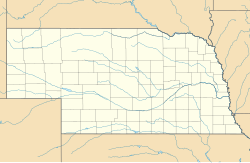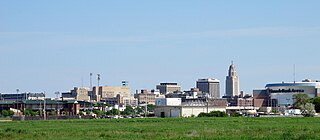
Lincoln is the capital city of the U.S. state of Nebraska and the county seat of Lancaster County. The city covers 96.194 square miles (249.141 km2) with a population of 289,102 in 2019. It is the second-most populous city in Nebraska and the 70th-largest in the United States. The city is the economic and cultural anchor of a substantially larger metropolitan area in the southeastern part of the state called the Lincoln Metropolitan and Lincoln-Beatrice Combined Statistical Areas. The statistical area is home to 356,083 people, making it the 105th-largest combined statistical area in the United States.
IEC 60364Electrical Installations for Buildings is the International Electrotechnical Commission's international standard on electrical installations of buildings. This standard is an attempt to harmonize national wiring standards in an IEC standard and is published in the European Union by CENELEC as "HD 60364". The latest versions of many European wiring regulations follow the section structure of IEC 60364 very closely, but contain additional language to cater for historic national practice and to simplify field use and determination of compliance by electrical tradesmen and inspectors. National codes and site guides are meant to attain the common objectives of IEC 60364, and provide rules in a form that allows for guidance of persons installing and inspecting electrical systems.
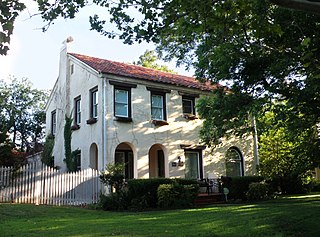
Lincoln Terrace is a historic and diverse neighborhood in the Eastside district of Northeast Oklahoma City, located on either side of Lincoln Blvd just south of the Oklahoma State Capitol, between NE 13th and NE 23rd streets.] Most homes in the area were built during the decade (1920–30) after the erection of the state capitol. The neighborhood has undergone a renaissance in recent years in part as a result of the expansion of the Oklahoma Medical Center complex, anchored by the University of Oklahoma Health Sciences Center, on its south side.
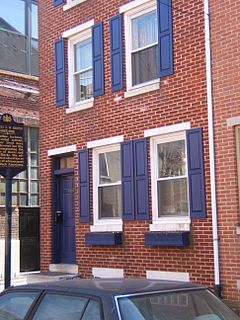
Bella Vista, Italian for "beautiful sight", is a neighborhood in the South Philadelphia section of Philadelphia, Pennsylvania.

The Swedish Hill Historic District is a former Swedish enclave that is now a residential area of downtown Austin, Texas. Often referred to as "Swede Hill."
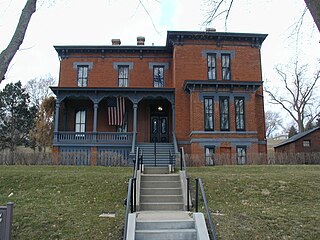
The General George Crook House Museum is located in Fort Omaha. The Fort is located in the Miller Park neighborhood of North Omaha, Nebraska, United States. The house was listed on the National Register of Historic Places in 1969, and is a contributing property to the Fort Omaha Historic District.
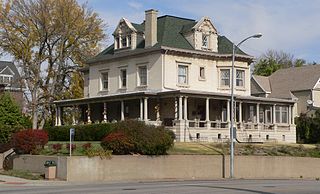
The Havens–Page House, also known as the T. C. Havens House, is a historic house built between 1900 and 1924 at 101 North 39th Street in the Gold Coast Historic District of Omaha, Nebraska. Listed on the National Register of Historic Places in 1982, this home is remarkable for its classical Georgian Revival architecture.
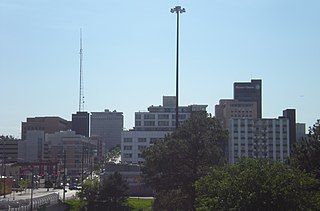
Midtown is a geographic area of Omaha, Nebraska that is a culturally, socially and economically important area of the city. It is home to major research centers, national corporations, several historic districts, and a number of historic residences.
Morton Meadows is a historic neighborhood located in Midtown Omaha, Nebraska. The neighborhood lies between Center and Leavenworth Streets, from 42nd Street to Saddle Creek, and is sometimes referred to by its central boulevard, Twin Ridge. It is near the Dundee area, as well as the Gold Coast, Field Club and Country Club historic districts.

The William Aiken House and Associated Railroad Structures make up a National Historic Landmark District in Charleston, South Carolina, that contains structures of South Carolina Canal and Railroad Company and the home of the company's founder, William Aiken. These structures make up one of the largest collection of surviving pre-Civil War railroad depot facilities in the United States. The district was declared a National Historic Landmark in 1963.

The William Jennings Bryan House, also known as Fairview, is a historic house museum on Sumner Street in Lincoln, Nebraska, United States. Built in 1902-03, it is noteworthy as the home of politician William Jennings Bryan (1860-1925), and was declared a National Historic Landmark in 1963. It is located on the Bryan Health hospital campus, and houses museum displays related to Bryan on the ground floor and the William Jennings Bryan Institute on the upper floors.

Chestertown Historic District is a historic district in Chestertown, Maryland. It was listed on the National Register of Historic Places and designated a National Historic Landmark in 1970, and its area was increased in 1984. The town on the Chester River, became the chief port for tobacco and wheat on the Eastern Shore of Maryland between 1750 and 1790. The port declined thereafter, as Baltimore became the major port for such activity. In consequence, Chestertown acquired a collection of more than fifty Georgian style town houses. The 18th-century residential area survived without harm a 1910 fire that destroyed the central business district of Chestertown.

The U.S. Capitol Gatehouses and Gateposts — designed circa 1827 by celebrated architect Charles Bulfinch — originally stood on the grounds of the United States Capitol in Washington, D.C. Two of the gatehouses are listed on the National Register of Historic Places in their new locations.
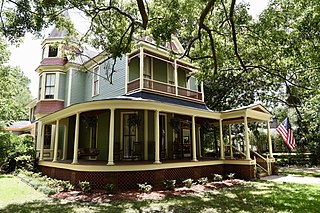
Paradise Park Historic District is located in Thomasville, Georgia. It was listed on the National Register of Historic Places 1984 with an increase in 2002. It consists of Thomasville's Paradise Park, and properties including 15 contributing buildings and one non-contributing building.

The Cottage Home Historic District is a historic district and neighborhood located on the near east side of Indianapolis, Indiana. A small portion of Cottage Home is listed on the National Register of Historic Places while a larger area is listed on the state and local levels. Known for its preponderance of "cottage-style" homes built with strong Victorian influences, Cottage Home has historically been a working class neighborhood. Numerous industrial buildings are also scattered throughout the district, providing a base of economic activity. Today, however, many of these buildings are vacant, providing a special challenge to preservation and urban renewal efforts.
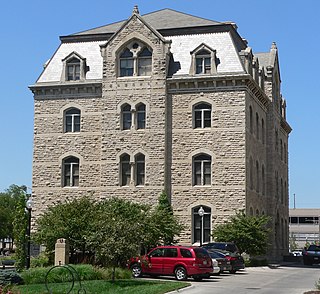
Lincoln City Hall is the former seat of the Lincoln, Nebraska city government. The hall was built from 1874-1879 as the U.S. Post Office and Court House, designed by the office of the U.S. Treasury Department's architect, Alfred B. Mullett. A new post office and court house was built in 1906 and the property was transferred to the city. It was superseded as city hall in 1969 when the city government moved into the City-County Building. Although Mullett is officially listed as the architect, much of the design work may have been carried out by his assistant, William Appleton Potter, who specialized in the Gothic style.

The Thomas P. Kennard House, also known as the Nebraska Statehood Memorial, is the oldest remaining building in the original plat of Lincoln, Nebraska. Built in 1869, the Italianate house belonged to Thomas P. Kennard, the first Secretary of State for Nebraska, and one of three men who picked the Lincoln site for the new state's capital in 1867. The house was designed by architect John Keys Winchell of Chicago.

Lincoln, Nebraska has many neighborhoods, including 45 recognized by Urban Development, City of Lincoln. A list and description of neighborhoods within Lincoln city limits follows.

The Center Avenue Neighborhood Residential District is a residential historic district located in Bay City, Michigan, running primarily along Center, Fifth, and Sixth Avenues between Monroe and Green Avenues, with additional portions of the district along Fourth between Madison and Johnson, down to Tenth Avenue between Madison and Lincoln, along Green to Ridge, and around Carroll Park. The original section, along Center and portions of Fifth and Sixth, was listed on the National Register of Historic Places in 1982. A boundary increase including the other sections of the neighborhood was listed in 2012.

The Midland Street Commercial District is a primarily commercial historic district located primarilyalong Midland Street, between Catherine and Litchfield Streets, in Bay City, Michigan. It was listed on the National Register of Historic Places in 1982.

